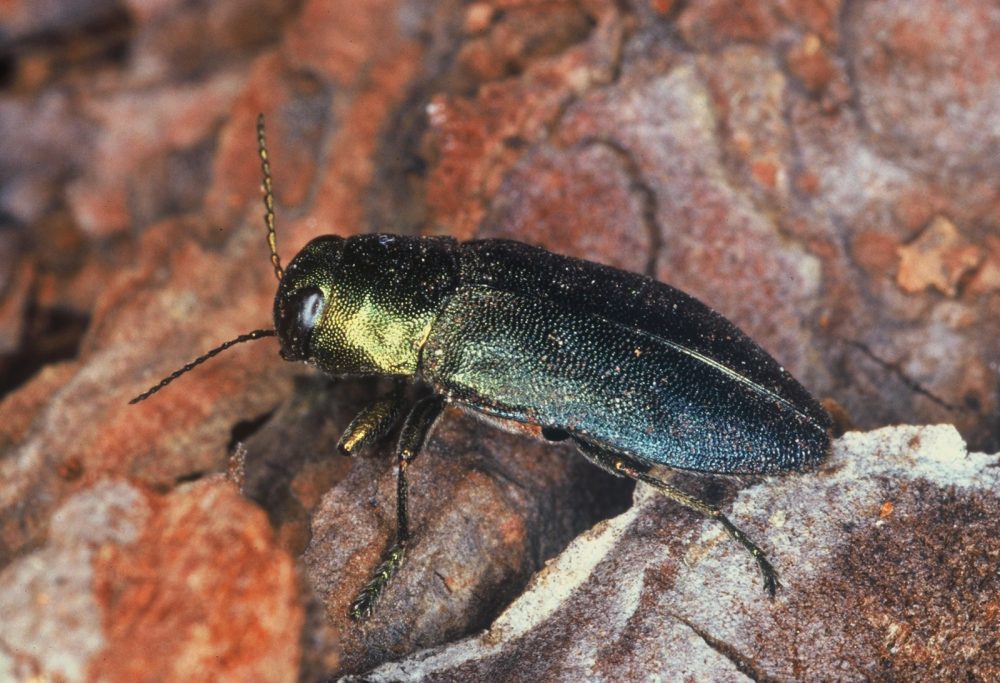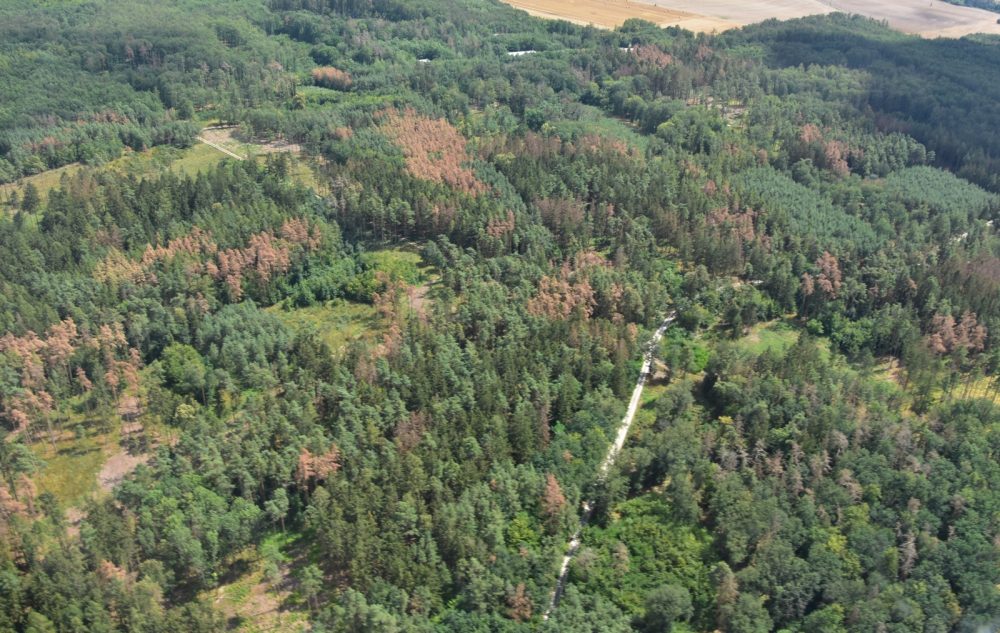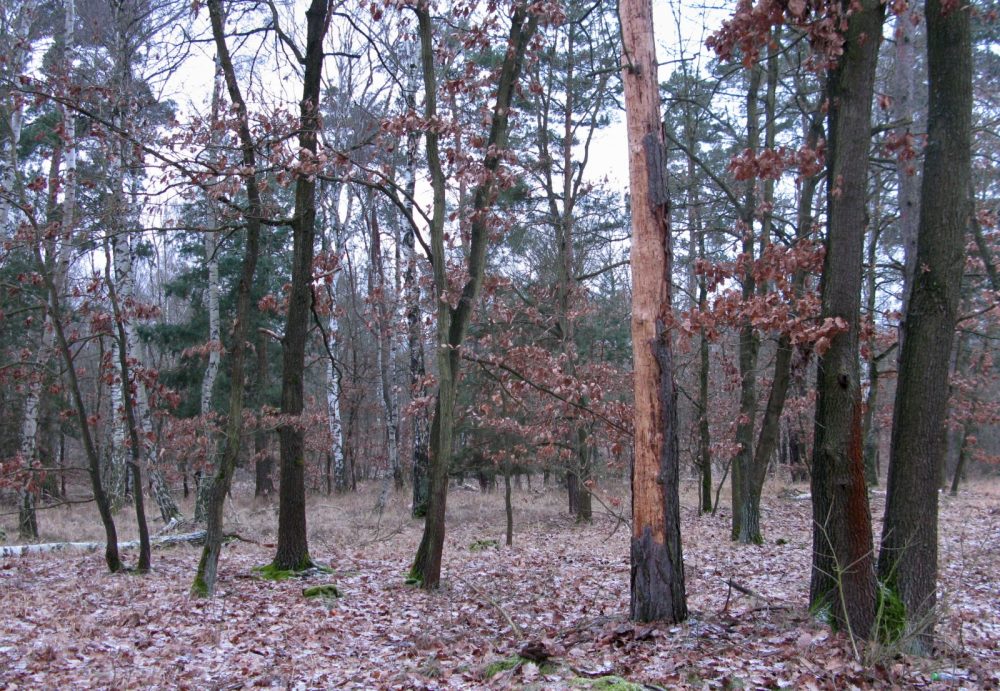Pine forests are threatened
 After the climatically extreme 2015 year, there was a sudden deterioration in the health of Scots pine in a number of regions of the Czech Republic. The rapid activation of secondary biotic pests, especially bark and wood-damaging insects, which, with their calamitous overpopulation (in the form of a so-called mortality stressor), caused the withering and death of physiologically damaged and weakened pine stands brought a dramatic dynamic to the whole process of the health collapse of this tree species.
After the climatically extreme 2015 year, there was a sudden deterioration in the health of Scots pine in a number of regions of the Czech Republic. The rapid activation of secondary biotic pests, especially bark and wood-damaging insects, which, with their calamitous overpopulation (in the form of a so-called mortality stressor), caused the withering and death of physiologically damaged and weakened pine stands brought a dramatic dynamic to the whole process of the health collapse of this tree species.
The current representation of Scots pine in our forests is 16%, which could increase to 17% in the future. But maintaining this share in the existing natural conditions will require a change in the way pine forests management, e.g. consisting in the planting of mixed stands and the use of farming methods close to nature. Foresters will have to pay much more attention to protecting the forest and suppressing the effects of unwanted harmful factors. Just like spruce stands, pine stands are susceptible to damage by both abiotic influences (wind, drought, snow) and biotic factors (herbivorous vertebrates, insect pests). These factors are linked by mutually reinforcing relationships.
As a result of advancing climate change, the mortality of pine trees due to the impact of bark beetles and also wood-destroying pests will probably continue to increase. Therefore, protection against economically undesirable insect species should become a necessary priority in pine forests. The large-scale and sudden extinction of mature trees associated with the creation of large areas without an upper tree layer, as well as their long-term non-afforestation, is not desirable from an ecological or socio-economic point of view. It is necessary to limit the creation of monoculture stands, especially conifers, and by all means to gradually increase the admixture of other tree species.
 Photo: Imago of steelblue jewel beetle (Phaenops cyanea)
Photo: Imago of steelblue jewel beetle (Phaenops cyanea)
For this reason, it is necessary to limit the harmful biotic agents influence and to use the principles of integrated forest protection (ecosystem perspective, use of antagonistic species, do not assess pests in isolation, to apply defensive measures that do not damage the essence of the forest ecosystem). Appropriate methods of forest protection can only be planned and applied with a detailed knowledge of harmful agents together with a forecast of their development. Therefore, scientists from FGMRI have prepared a practical manual for foresters „Protection of Scots pine from bark and wood-boring insects“ (Ochrana borovice lesní před podkorním a dřevokazným hmyzem).
In this methodology, the scientists developed a proposal for optimized methods of control and protection based on knowledge of the current spectrum of bark beetles. Newly discovered species, or newly showing harmful effects on Scots pine, are listed here in more detail. The presented methods and procedures of forest protection against current harmful agents in pine stands provide relatively simple instructions, which can be used to prevent an increase in the population density of pests, or to suppress the resulting overpopulation.
As for the essential and new contribution of the methodology, it is a clear summary of information on the forestry and economic importance, bionomy and distribution of individual species and the design of practically feasible methods of protection and defence for hitherto insignificant or newly discovered species of harmful organisms, such as mainly the pine beetle, and the pine beetle, possibly also the introduced bark beetles Gnathotrichus materiarius and Xylosandrus germanus.
 Photo: Extensive mosaic attack of pine stands by bark beetles (Znojemsko), VÚLHM archive
Photo: Extensive mosaic attack of pine stands by bark beetles (Znojemsko), VÚLHM archive
In addition, based on obtained knowledge gained, the researchers revised the methodological procedures for known existing prominent harmful agents. An example of them can bark beetle Ips acuminatus. The methodology thus provides foresters with the necessary information, on the basis of which they can implement effective measures to protect the forest, preventing the emergence and development of gradations, or leading to the suppression of existing gradations, whether with previously known or newly established harmful organisms.
The ongoing climate change in the territory of the Czech Republic is associated with an increase in temperatures and a decrease and change in the distribution of the amount of precipitation during the growing season. As a result, trees are weakened by lack of rainfall, higher temperatures and changes in nutrient cycling. Higher temperatures are associated with a shorter (faster) development time for economically undesirable organisms, thereby extending their reproductive period and birth rate, both supported by more effective insect pheromone communication. Shorter development time also reduces larval exposure time to their natural enemies.
 Photo: Female of wood wasp Sirex noctilio, FGMRI archive
Photo: Female of wood wasp Sirex noctilio, FGMRI archive
Several species of bark beetles, especially the bark beetle Ips acuminatus and the bark beetle Ips sexdentatus, in a lesser extent also the lesser pine shoot beetle Tomicus minor and the common pine shoot beetle Tomicus piniperda, they belong among the most aggressive bark beetles in pine forests in the Czech Republic. In addition, other species of bark beetles, e.g. the bark beetle Orthotomicus longicollis, they are constantly expanding their range.
The bark beetle elongated Orthotomicus longicollis is one of the representatives of the typical fauna of the original old forests pine stands. Within the former Czechoslovakia, there was this species found only in the area of western Slovakia, later it spread to the areas of southern Moravia. Currently, its area of expansion is increasing. In recent years, it has also been found in other locations in the Czech Republic, even in areas very far from its original occurrence, such as for the first time in Bohemia near Sobotka and later in northern Bohemia in the Mimon region.
The steelblue jewel beetle Phaenops cyanea is no less aggressive, especially in periods of increased physiological stress of the host tree. Typically, the primary pest is the wood wasp Sirex noctilio, which becomes a significant cause of the drying of pine trees, especially in the warmer parts of the Czech Republic.
 Photo: Pine tree attacked by the bark beetle Orthotomicus longicollis, FGMRI archive
Photo: Pine tree attacked by the bark beetle Orthotomicus longicollis, FGMRI archive
In connection with the drying of tree species, the issue of subsequent afforestation of clearings also arises. The presence of a large number of stumps or drying/withered standing trees near seedlings or young seedlings is the reason for the increase in damage caused by the pine weevil Hylobius abietis.
Our main efforts should be aimed at preventing or at least limiting the occurrence of large-scale dying of pine forests, which represents serious ecological, economic and social risks.
The methodology was created within the framework of the research project No. QK1920406 entitled: Biotic aspects of Scots pine dieback in areas affected by drought.
Authors of the methodology: Ing. Miloš Knížek, Ph.D., Ing. Jan Liška, RNDr. Adam Véle, Ph.D., doc. Ing. Petr Zahradník, CSc., Ing. Bc. Jan Lubojacký, Ph.D., e-mail: knizek@vulhm.cz
Methodology Protecting of Scots pine (Pinus sylvestris) from bark and wood boring insects can be downloaded here.
Prepared by: Ing. Jan Řezáč, rezac@vulhm.cz
Introductory photo: An example of a progressing attack by the bark beetle Ips acuminatus, FGMRI archive
